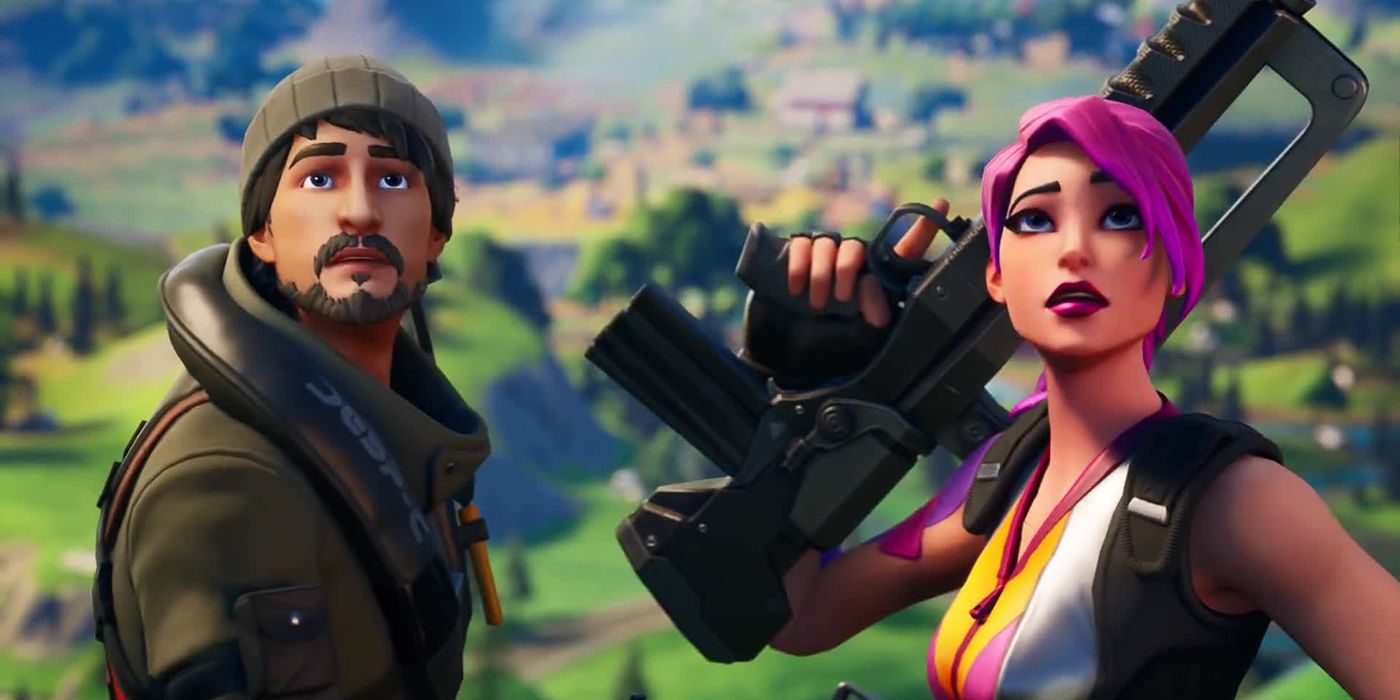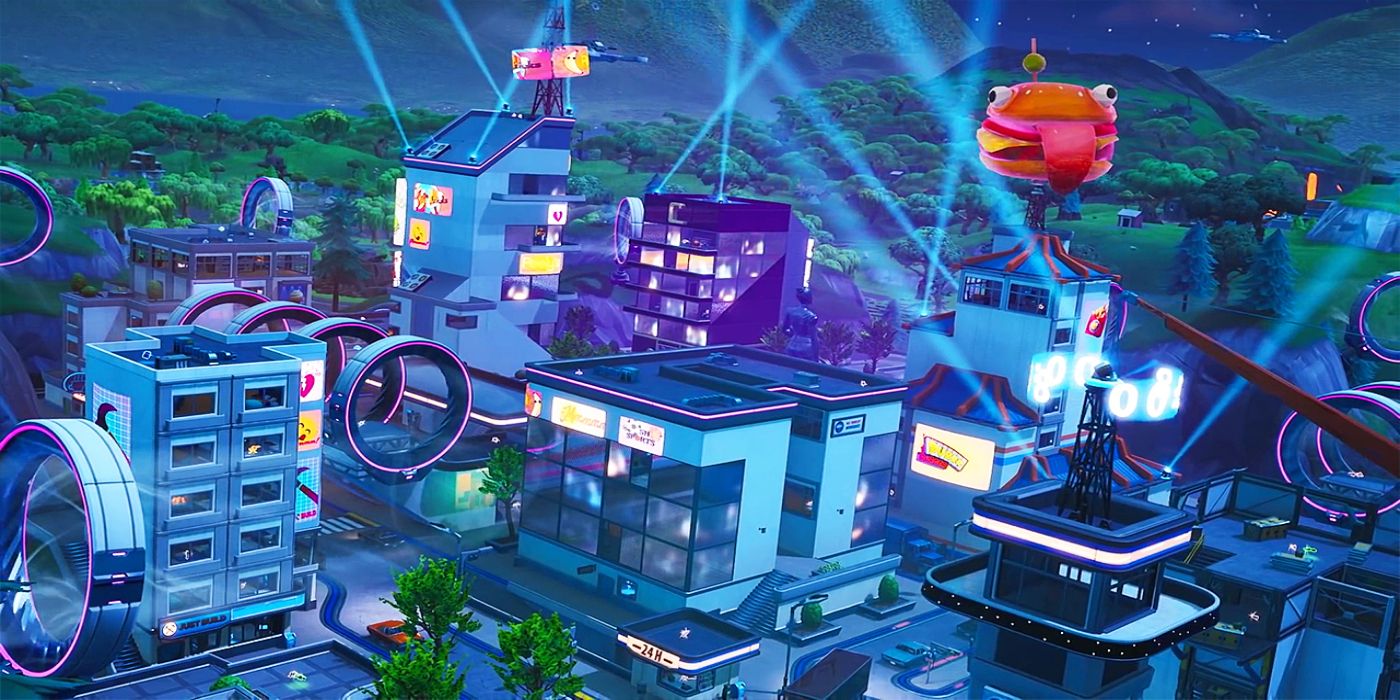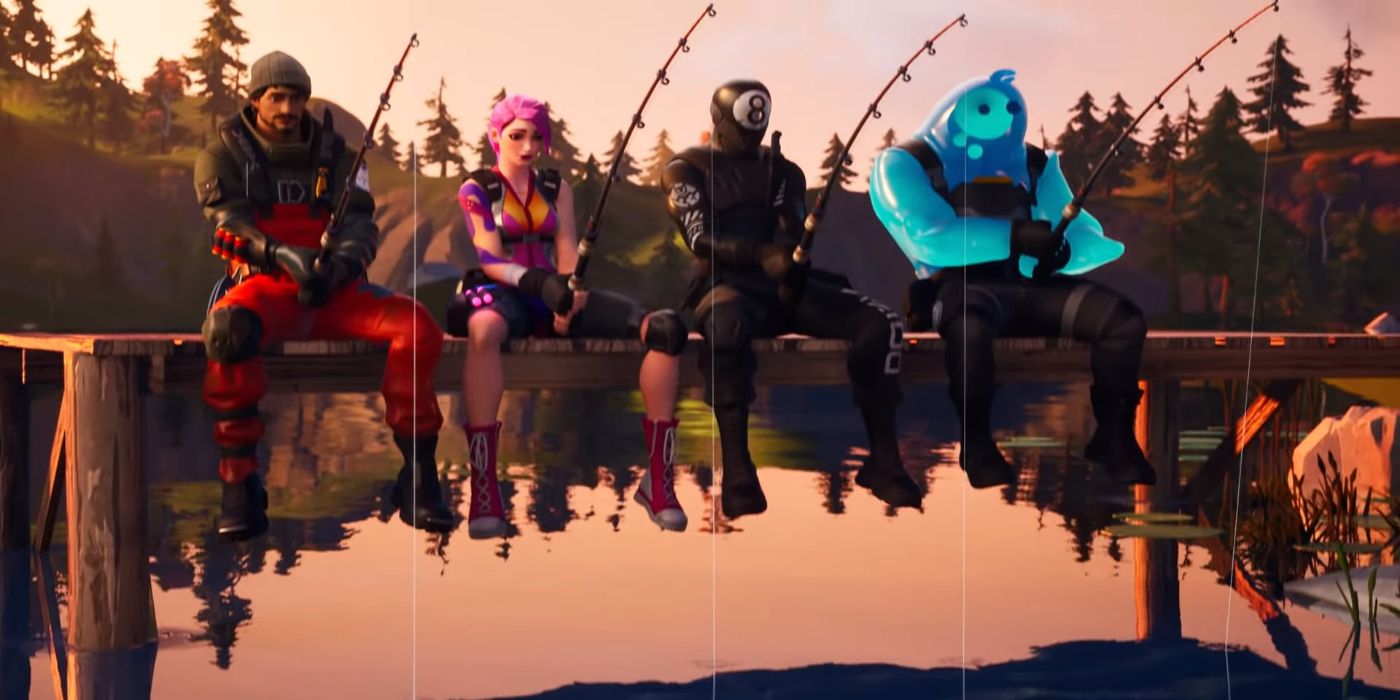Fortnite is easily one of gaming’s hottest current properties right now, as well as one of the biggest video game franchises of all time. Part of the appeal of the game has been the ever expanding, constantly changing nature of the battle royale's host island. The conclusion of the game's Season 10, however, made a very drastic change to the locate -- permanently.
The result was Fortnite: Chapter 2, complete with a brand new map/island for players to traverse. This has the effect of creating an entirely new (yet arguably classic) experience, but at the expense of something that fans had come to love.
Fortnite Island, through its numerous changes, had an expansive history and personality all of its own, as well as a litany of iconic locations. While some of these have returned in Chapter 2, notable map locations such as the venerable Tilted Towers have not.
With that in mind, lets look back at the recognizably classic spots on the former Fortnite Island and the changes that Chapter 2 has brought to the map.
FORTNITE THROUGH THE YEARS
The Battle Royale Island was first introduced with the mode/game itself. Rather unrefined at first, the locations and points of interest around the map featured widely divergent layouts and climates. These included the waterside Loot Lake, the commercial area, Retail Row, and the verdant Wailing Woods. These and other map locations would be changed with each passing season, and even mainstays would have additional elements introduced.
Two notable examples of this were Flush Factory and the iconic Tilted Towers. The latter was covered in snow during Season 7 of the game, while the former was destroyed by an iceberg. Tilted Towers would also be destroyed the following season, before being remade as the futuristic Neo Titled in Season 9.
Other changes to the game's surroundings have been caused by earthquakes, monster infestations and other unnatural disasters. These map areas gave the game a personality and a sense of history, with players reminiscing on the game and its different phases. To this end, the highly developed, environmentally diverse map of Season 10 hardly bares any resemblance to its Season 1 counterpart.
This form of world-building set the game apart from the various other games in the battle royale genre, many of which lacked this colorfully wacky attention to detail. Keep in mind, also, that this has been achieved in a mere two-year time span. Unfortunately, the game's knack for dramatic change would eventually spell doom for the island as players had come to know it, and the game will most certainly never be the same without it.
A BRAND NEW ERA
Compared to the futuristic, highly developed layout of the island before the change, the island of Fortnite: Chapter 2 is a far more lush, natural locale. This back-to-basics approach for the game's new beginning reflects many of the features it had when it first launched. Returning drop locations include Pleasant Park, Retail Row, Salty Springs and Risky Reels, with the latter even bringing back the Drive-In Theater that had been gone since Season 7.
The rest, however, is an otherwise new step into the future for the game, bringing new features like fishing, swimming and plethora of new weapons for players to choose from. Still, there doesn't seem to be any sort of Fortnite "Classic" on the horizon for fans who miss the way that the game used to be.
This is understandable, given that Fortnite has never done this to accommodate its list of game engine changes. Given how drastic this change is, however, Epic Games should consider giving fans a chance to return to the locales that made them love the game.
The nature of the digital age means that, luckily, nothing is gone forever anymore: Players can still experience the old Fortnite Island, if only in a non-participatory way through the huge archive of Twitch and YouTube videos. In-game, however, a huge part of modern gaming culture has been sucked into a black hole.
Fortnite is available across multiple gaming platforms, including Xbox One, PlayStation 4, Windows, Nintendo Switch, macOS, iOS, and Android devices.
KEEP READING: Fortnite: The Return of Greasy Grove and Moisty Mire Is a Major Flop



